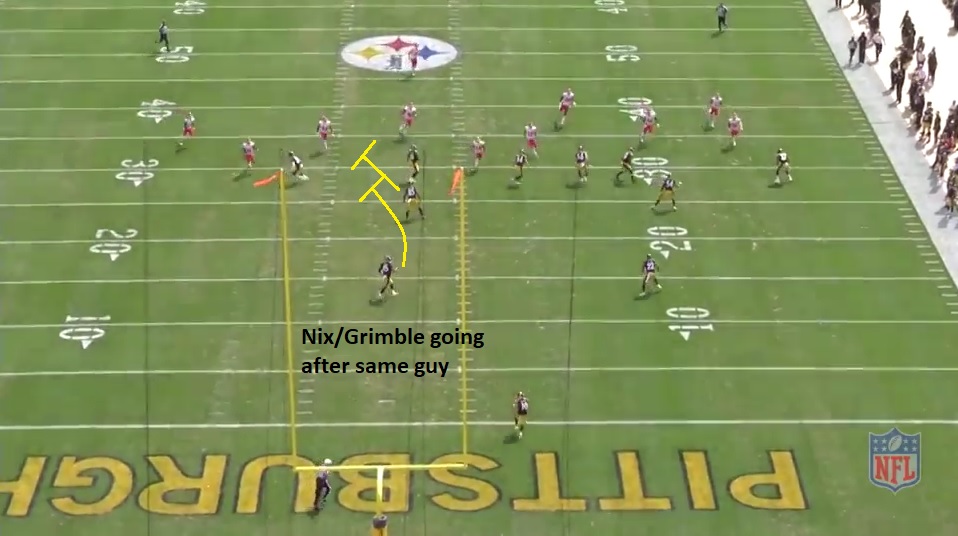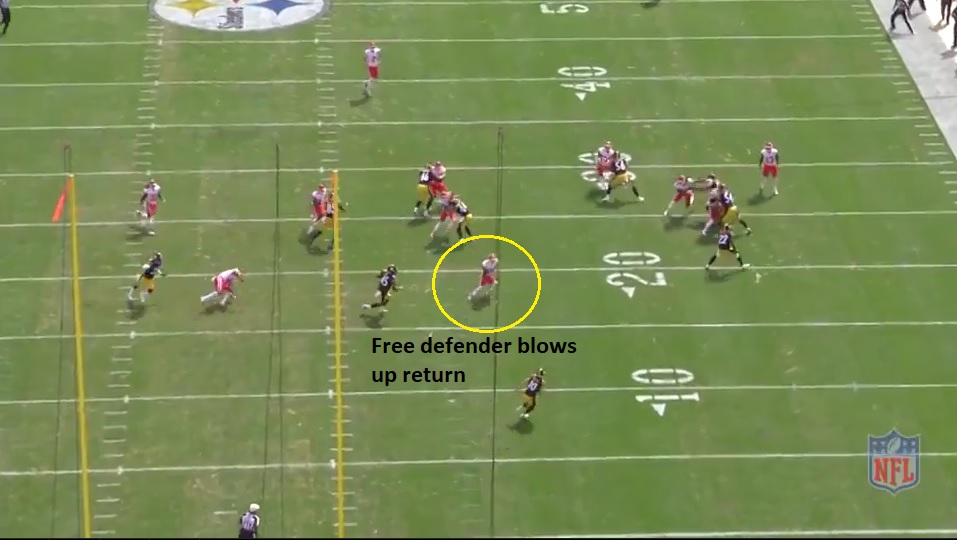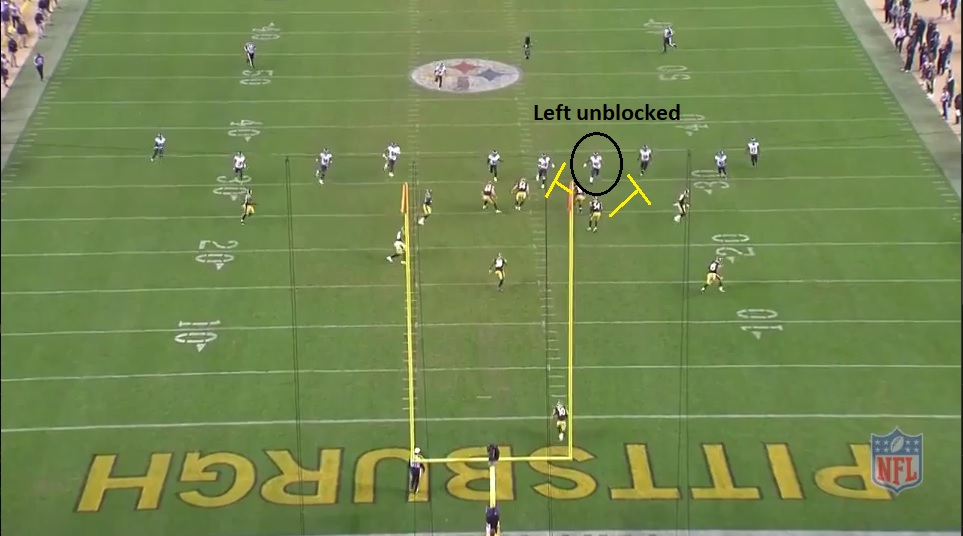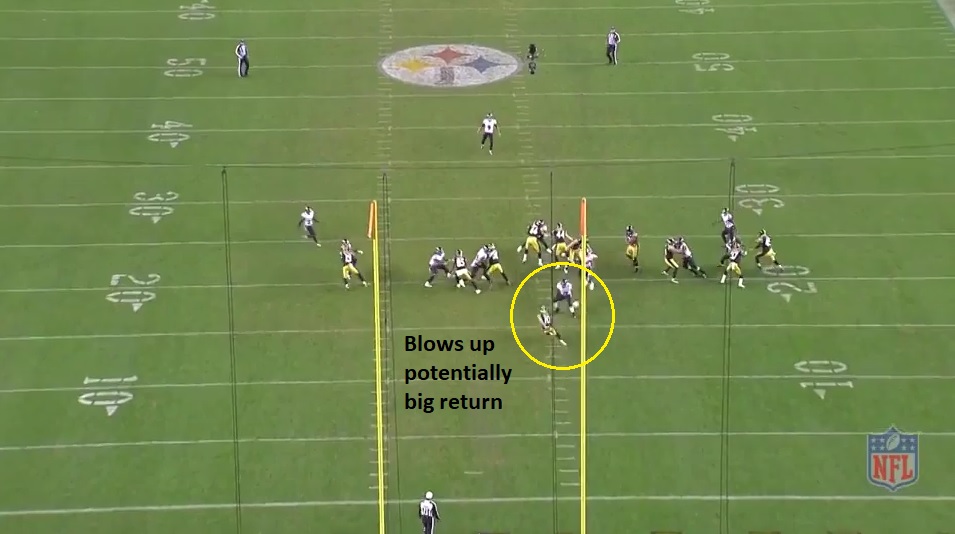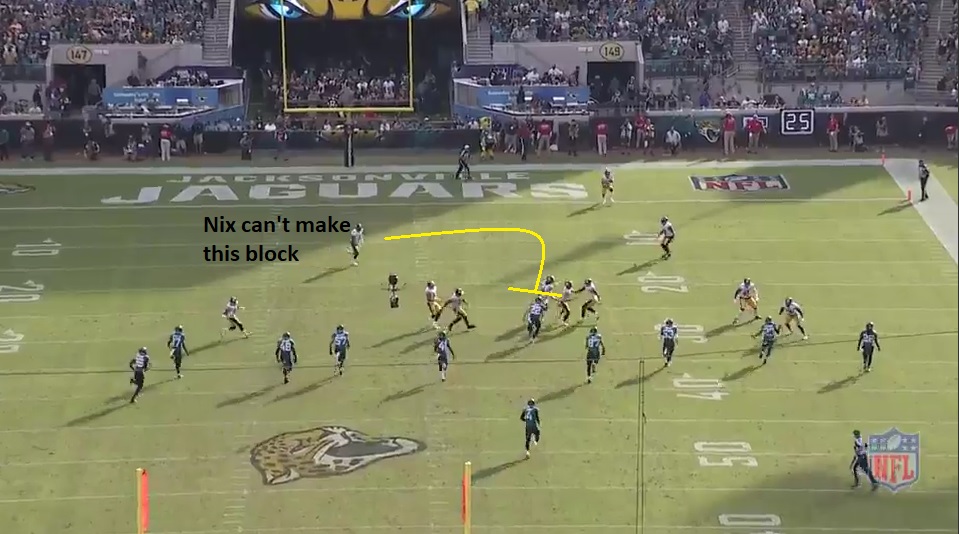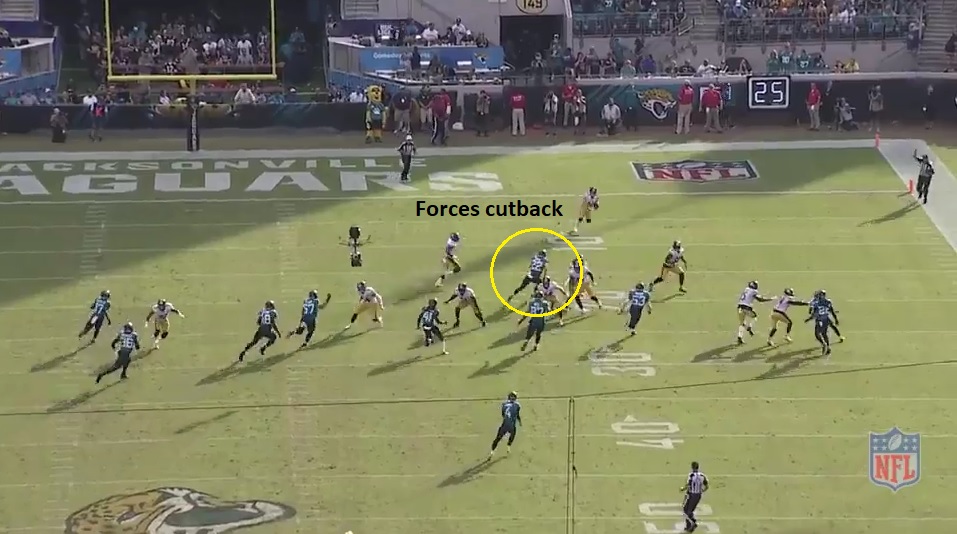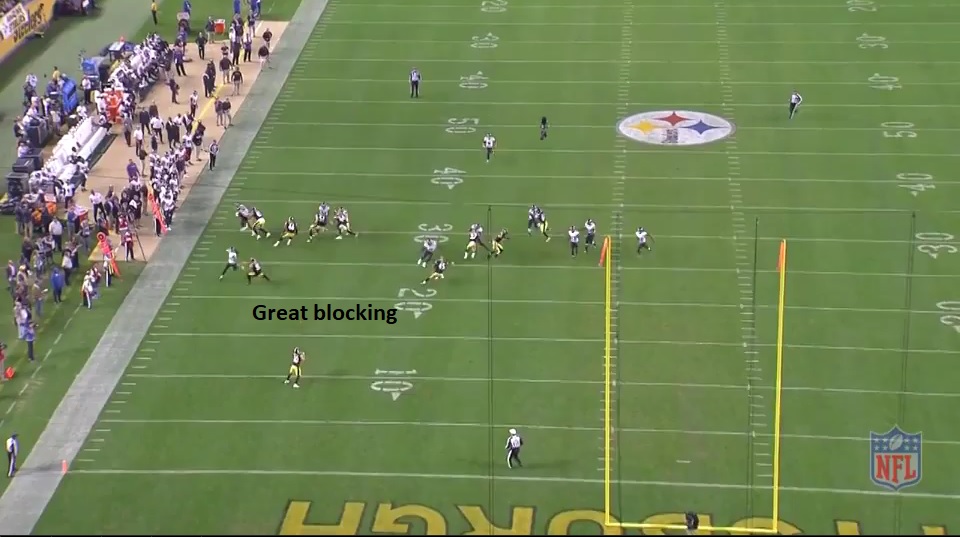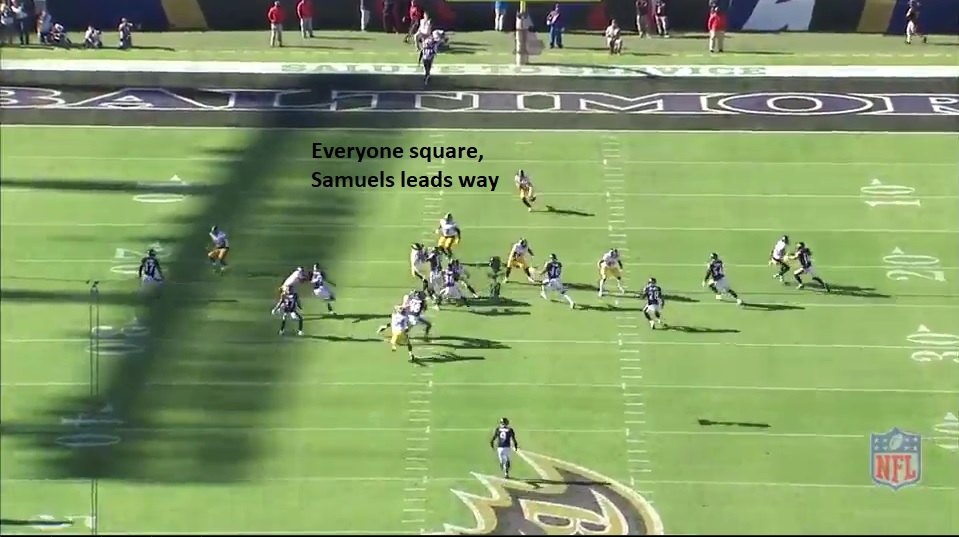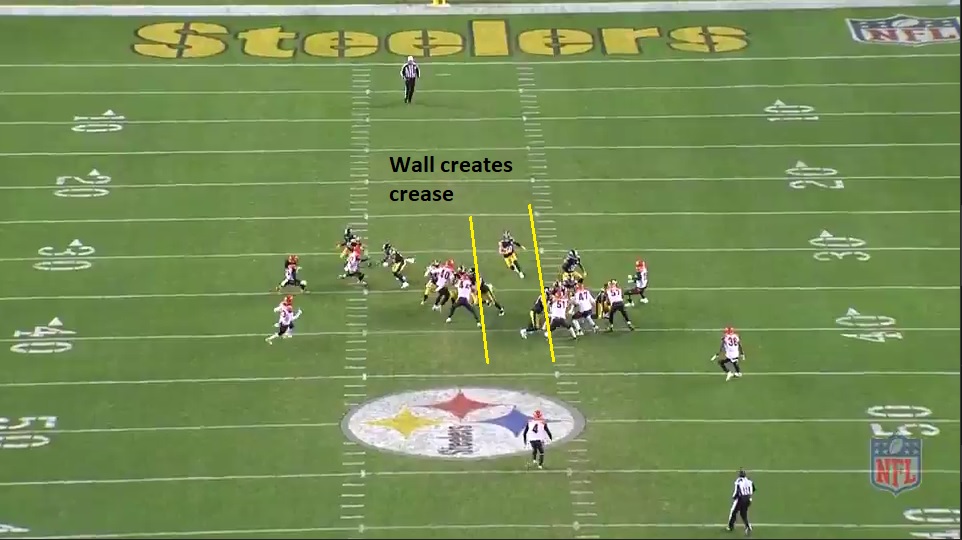We love talking special teams around here. Often, yes, it’s to add context and sometimes defend the bad rap the unit gets. But other times, the criticism is more than fair. Nowhere is that more true than when it comes to the Pittsburgh Steelers’ kick return game. It’s been baaaaaad.
In 2017, they finished 29th in kick return average, 19.1, even with a 97 yard touchdown by JuJu Smith-Schuster in the finale against Cleveland. So they traded for Ryan Switzer last summer, an accomplished return man at North Carolina and his rookie year in Dallas (averaged 25 per return in 2017) to try and fix the problem.
Instead, things stayed about the same. They averaged 19.3 yards per return and their ranking fell to 31st in the league, barely above the Chicago Bears. After the season, Switzer remarked it was the first time as a football player he didn’t finish a season with at least one return touchdown. Since Smith took over as the Steelers’ ST coach in 2013, the KR game has ranked no higher than 14th and most years, finishes somewhere in the 20s.
But you know all that by now. This unit has struggled and they gotta fix it. Instead of rehashing all that, let’s look at what problems existed last year and how they can be fixed. I combed through and took notes of each return. Unsurprisingly, whenever a group performs so poorly, there are issues across the board. The kick return game is an operation and for it to succeed, each part has to do its job. That in mind, we’re breaking down examples of issues with the blocking, the return man, and the scheme. We’ll end by checking out the few positive returns as examples of how it looks when everything goes right.
Before we get into the individual plays, of the 17 returns where I viewed clear fault, the blame broke down like this:
Blocker’s Fault: 11.5
Returner’s Fault: 3.5
Coaching’s Fault: 2
Now let’s get into the tape.
Kick Return Problems (Blockers Fault)
The most common problem area for the team though I assume that’s true for any kick return unit. Much more likely one of the ten blockers screws up than the singular return man who has probably been doing it his entire life. There were issues of players not throwing good blocks or miscommunication that allowed defenders free lanes to Switzer.
Here’s a great example of the latter. First quarter, Week 2 against the Kansas City Chiefs. Right return. Initially looks set-up ok but there’s a clear breakdown between Xavier Grimble and Roosevelt Nix to the left of Switzer/the return. They each take the same guy, leaving R1 free. Screws up the return. Forces Switzer wide and pinned to the sideline.
To make matters worse, and it’s a little ticky-tack on the call, Jordan Dangerfield gets called for block in the back. He’s part of the front five, furthest to the right. If your guy gets past, as what happens here, you have to let him go. Find the next man. And there was a double-team here, LJ Fort picked him up, so the defender was still blocked.
Before the penalty, it was a 24 yard return that put the Steelers at their own 21. After, they were at the 11 with a long field ahead of them. Part of the reason why their average starting field position was 2nd worst in football.
This one kills me. File it under “should’ve been awesome returns,” and the difference between a good and bad unit. Almost everyone does their job. Almost. But like an offensive line, all it takes is one guy to break down. Only there’s ten of them and they don’t dedicate their job to this like a guard does.
Here, L2 (second to the left from the kicker’s point of view), isn’t picked up. Jon Bostic goes for the double-team on L1, Anthony Chickillo takes L3, and the defender is free. Makes the tackle on Switzer.
Imagine this is picked up. Switzer is one-on-one with a Raven. A battle you expect your return man to win. Could’ve been a big return. Maybe would’ve been six. Instead? 21 yard gain to the Steelers’ 16. Ugh.
Last one. Even when everyone is accounted for, the blocking can still break down. End of the game against the Cincinnati Bengals, Week 6. Set up well here initially. But check out Brian Allen vs Jordan Dangerfield. Allen’s posture here is poor. Lunges to the block and allows the inside lane for this middle return. Gets blown back and run through, quickly losing the block (if you lose the block, lose it slow, get tangled up).
Now look at Dangerfield. Better posture, square to the return and helps keep the wall intact. These guys are playing the same position, opposite ends of the front wall, and he does a nice job setting up the block.
The defender who disengages from Allen makes the tackle for a 23 yard return. Want you to pay really close attention to Allen at the bottom of the screen.
There were four assessed penalties on Steelers’ kick returns this season. And yeah, they’re unsurprisingly costly. Those resulted in an average return of 11.8 yards per return and average starting field position at the 11. If we imagined the Steelers had just an average of 20 yards per return without penalty, their yearly average would’ve risen by more than a full yard from 19.3 to 20.4.
Kick Return Problems (Coaching Fault)
But it isn’t always the blockers’ fault. There are times where the scheme didn’t put players in position to win (literally my definition of coaching). One thing I noticed are the return teams issues depending on where the ball is kicked. On a middle or right return, they do ok. On left returns? Much worse. I broke down the averages by direction.
Right Return: 24.7 per return
Middle Return: 22.6 per return
Left Return: 19.3 per return
If their overall average would be what it is on the right or left, they’d be an average to above average unit. But the left returns bring them down. Three of them, excluding penalties, went for 15 or fewer yards.
Why? There often are multiple issues on any return but on left runbacks, there is seemingly too much pressure on the right wedge to make the block. Smith seems to ask that man to swing across the field to pick up his man, who is running away – to the left – to cover. Puts him in a tough spot. Let me show you what I mean.
Left return against the Patriots. Get a really good push on the frontside with a pair of double-team blocks. It’s initially blocked well. But Nix, who must key Switzer until he receives the football and runs it out, can’t get over to block L4 because of the angle the defender is able to take. It forces Switz to stop, cut back, and move away from his blocks.
Still a decent return, 27 yards to their own 28, but could’ve been better. Just think what would’ve happened had Switzer been able to stay left and remain upfield. May have been a long runback.
Similar issue versus Jacksonville. To be clear, there are obvious issues between Tyler Matakevich, Matthew Thomas, and Chickillo. Bunched up, not sure who’s taking who. But it looks like Nix has to come across to take R1 and doesn’t have the foot speed to get there. Again, Switz has to cut back, Nix narrowly avoids a block in the back, and it screws up the intended path. Just a 20 yard return.
Maybe Nix was just trying to correct someone else’s mistake. But on far left returns, it looks like an issue even if everyone does their job and I wonder if there’s a way to change that with either the personnel or the scheme. Maybe switch Nix’s spot with a more athletic player. I love Nix, he’s an asset on all phases of special teams. But an adjustment is worth examining. Something for Danny Smith to fix and I put the blame, from my outsider perspective, on him for these plays.
Kick Return Problems (Returners Fault)
And sometimes the returner is the dude who screws up, too. Easiest one to point too. Ravens know the Steelers have issues in the return game? Kick it short, force them to return it instead of taking the easy 25 yard touchback (if they average 20 yards a return, if you can boot it inside the five, odds are they will have worse field position). Switzer doesn’t judge it well off the kick, backing up into the end zone, and has to run to the ball and try to catch up. It hits the ground and bounces, forcing him to wait for it before he can get upfield.
If he catches it in the air? Look at the great blocking here. Some of the best on any return this year.
But by the time he actually gets upfield, the blocks have broken down. And that’s not their fault; like an offensive line, guys can only hold on for so long and it’s less time on kickoffs because there’s more space and your blockers aren’t as talented.
Another long return thwarted.
One more. Chiefs Week 2. R5 is unblocked here, and that’s an issue, but I don’t understand why Switzer ducked to the left and out of bounds. That’s a one-on-one battle. Most long kick returns involve the returner winning one of those. Use the field, run to the right, make a play. Don’t wave the white flag.
Good Returns
Ok, we’ve walked through the sewers long enough. Let’s look at good returns. They existed! Middle return in the rematch versus Baltimore. This time, Switzer anticipates the short kick, has good posture upon fielding the ball (momentum going forward), and it’s well blocked up front. Bostic shows power, Dangerfield runs his feet, Jaylen Samuels – more athletic than Nix – is able to wrap around for the lead block. 31 yard return to the 39. Forced Baltimore to kick deep the rest of the game.
And end of the year. Nothing flashy here. Another middle return. Good pocket created, everyone is square to their blocks, and is opens up a crease. 27 yard return to the 45 (penalty walked the Bengals back before the kick).
Final Thoughts
Couple other musings that didn’t fit anywhere else.
– I didn’t grade or keep track of it but I thought Matthew Thomas, Jon Bostic, and Jordan Dangerfield struggled the most on this unit. Thomas never knew who to pick up and didn’t show good technique with his depth and on contact even when he did. Bostic made too many mental mistakes and Dangerfield had the biggest problems staying square to blocks and disengaging when beat. Made him prone to penalties, flagged twice in the first three weeks in 2018. His safety build had a lack of strength and he was too overpowered in moments. Struggled to anchor as a blocker.
Thomas was gone halfway through the year and Bostic was let go. Hopefully new faces out there can do a better job. That, of course, isn’t guaranteed but Thomas was a rookie who we knew had “above the neck” issues coming out and Bostic hadn’t played special teams for three years. He was clearly uncomfortable with the role.
– Although I’m sure all teams faced it at some point and I definitely don’t want to use it as an excuse, there were two kick returns that were “onside protect.” Late game attempts where the Steelers aligned in an onside formation only to have the kicking team boot it deep. That meant Switzer had no blocking and wasn’t looking to go far, taking a knee or sliding down before first contact like it’s coached. Those two returns averaged eight yards. Toss in Rosie Nix’s 12 yard return and Jaylen Samuels falling on a ball at the end of the half versus New Orleans and the average is brought down pretty heavily.
Remove those four and you get an average of 21.1 yards per return on all “true” attempts. That would have, and I know we didn’t remove those attempts from any other team, placed them 25th in the league, a slight improvement. Just some perspective.
– Overall, I liked Switzer’s posture in the return game. He did a nice job fielding the ball cleanly, getting under the ball, and having momentum going forward on the catch. You don’t want to be static and in place on catching the ball. Wastes time. He’s quick to accelerate and get upfield without dancing but shows toughness to run into the teeth of the return and moderate ability to make defenders miss. His inability to break and run through tackles though is a drawback.
– The good news is I think all these problems are fixable. And has me hopeful they turn things around though I know recent history isn’t kind to Danny Smith or this team.


